#d1cdc9 Color Information
In a RGB color space, hex #d1cdc9 is composed of 82% red, 80.4% green and 78.8% blue. Whereas in a CMYK color space, it is composed of 0% cyan, 1.9% magenta, 3.8% yellow and 18% black. It has a hue angle of 30 degrees, a saturation of 8% and a lightness of 80.4%. #d1cdc9 color hex could be obtained by blending #ffffff with #a39b93. Closest websafe color is: #cccccc.
-
- R 82
- G 80
- B 79
-
- C 0
- M 2
- Y 4
- K 18
● #d1cdc9 color description : Grayish orange.
#d1cdc9 Color Conversion
The hexadecimal color #d1cdc9 has RGB values of R:209, G:205, B:201 and CMYK values of C:0, M:0.02, Y:0.04, K:0.18. Its decimal value is 13749705.
| Hex triplet | d1cdc9 | #d1cdc9 |
|---|---|---|
| RGB Decimal | 209, 205, 201 | rgb(209,205,201) |
| RGB Percent | 82, 80.4, 78.8 | rgb(82%,80.4%,78.8%) |
| CMYK | 0, 2, 4, 18 | |
| HSL | 30°, 8, 80.4 | hsl(30,8%,80.4%) |
| HSV (or HSB) | 30°, 3.8, 82 | |
| Web Safe | cccccc | #cccccc |
| CIE-LAB | 82.612, 0.665, 2.467 |
|---|---|
| XYZ | 58.667, 61.435, 64.023 |
| xyY | 0.319, 0.334, 61.435 |
| CIE-LCH | 82.612, 2.555, 74.924 |
| CIE-LUV | 82.612, 2.516, 3.576 |
| Hunter-Lab | 78.381, -3.562, 6.437 |
| Binary | 11010001, 11001101, 11001001 |
Color Schemes with #d1cdc9
Alternatives to #d1cdc9
Below, you can see some colors close to #d1cdc9. Having a set of related colors can be useful if you need an inspirational alternative to your original color choice.
#d1cdc9 Preview
This text has a font color of #d1cdc9.
<span style="color:#d1cdc9;">Text here</span>This paragraph has a background color of #d1cdc9.
<p style="background-color:#d1cdc9;">Content here</p>This element has a border color of #d1cdc9.
<div style="border:1px solid #d1cdc9;">Content here</div>.text {color:#d1cdc9;}.background {background-color:#d1cdc9;}.border {border:1px solid #d1cdc9;}Shades and Tints of #d1cdc9
A shade is achieved by adding black to any pure hue, while a tint is created by mixing white to any pure color. In this example, #0a0908 is the darkest color, while #fefefe is the lightest one.
-
#0a0908
#0a0908rgb(10,9,8) -
#141311
#141311rgb(20,19,17) -
#1f1c1a
#1f1c1argb(31,28,26) -
#292623
#292623rgb(41,38,35) -
#34302c
#34302crgb(52,48,44) -
#3f3a35
#3f3a35rgb(63,58,53) -
#49443e
#49443ergb(73,68,62) -
#544e47
#544e47rgb(84,78,71) -
#5e5750
#5e5750rgb(94,87,80) -
#696159
#696159rgb(105,97,89) -
#736b62
#736b62rgb(115,107,98) -
#7e756b
#7e756brgb(126,117,107) -
#897f74
#897f74rgb(137,127,116)
-
#92887f
#92887frgb(146,136,127) -
#9b9289
#9b9289rgb(155,146,137) -
#a49c94
#a49c94rgb(164,156,148) -
#ada69f
#ada69frgb(173,166,159) -
#b6b0a9
#b6b0a9rgb(182,176,169) -
#bfb9b4
#bfb9b4rgb(191,185,180) -
#c8c3be
#c8c3bergb(200,195,190) -
#d1cdc9
#d1cdc9rgb(209,205,201) -
#dad7d4
#dad7d4rgb(218,215,212) -
#e3e1de
#e3e1dergb(227,225,222) -
#eceae9
#eceae9rgb(236,234,233) -
#f5f4f3
#f5f4f3rgb(245,244,243) -
#fefefe
#fefefergb(254,254,254)
Tones of #d1cdc9
A tone is produced by adding gray to any pure hue. In this case, #cdcdcd is the less saturated color, while #fbcd9f is the most saturated one.
-
#cdcdcd
#cdcdcdrgb(205,205,205) -
#d1cdc9
#d1cdc9rgb(209,205,201) -
#d5cdc5
#d5cdc5rgb(213,205,197) -
#d9cdc1
#d9cdc1rgb(217,205,193) -
#ddcdbd
#ddcdbdrgb(221,205,189) -
#e0cdba
#e0cdbargb(224,205,186) -
#e4cdb6
#e4cdb6rgb(228,205,182) -
#e8cdb2
#e8cdb2rgb(232,205,178) -
#eccdae
#eccdaergb(236,205,174) -
#f0cdaa
#f0cdaargb(240,205,170) -
#f4cda6
#f4cda6rgb(244,205,166) -
#f7cda3
#f7cda3rgb(247,205,163) -
#fbcd9f
#fbcd9frgb(251,205,159)
Color Blindness Simulator
Below, you can see how #d1cdc9 is perceived by people affected by a color vision deficiency. This can be useful if you need to ensure your color combinations are accessible to color-blind users.
